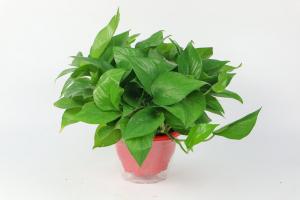Introduction
Synthetic pot, also known as Spice or K2, is a chemically-engineered substance that mimics the effects of marijuana. Unlike marijuana, synthetic pot is not derived from the cannabis plant. Instead, it is created using a range of plant materials and chemicals. In this article, we will focus on the plant materials used in the creation of synthetic pot.
The Plant Materials Used in Synthetic Pot
The plant materials used in synthetic pot can vary depending on the specific formulation. However, some of the commonly used plant materials include:
Damiana
Damiana is a shrub native to Central America and Mexico. It has historically been used as an aphrodisiac and to treat anxiety and depression. In synthetic pot, damiana is used for its psychoactive effects.
Marshmallow Leaf
Marshmallow leaf is a plant native to Europe, Asia, and Africa. It is used in herbal medicine to soothe the throat and as an expectorant. In synthetic pot, it is used to add bulk to the product.
Blue Lotus Flower
Blue lotus flower is a plant native to Africa and Asia. It has been used in traditional medicine to treat anxiety and promote relaxation. In synthetic pot, it is used for its calming effects.
Baybean
Baybean is a shrub native to the southern United States and South America. It has been used in traditional medicine to promote relaxation and reduce anxiety. In synthetic pot, it is used for its psychoactive effects.
St. John’s Wort
St. John’s Wort is a plant native to Europe, Asia, and North Africa. It has been used in traditional medicine to treat depression and anxiety. In synthetic pot, it is used for its mood-altering effects.
Why are Plant Materials Used in Synthetic Pot?
Plant materials are used in synthetic pot to add bulk to the product and to give it a natural appearance. Additionally, some plant materials have psychoactive or calming effects that can enhance the high produced by the synthetic cannabinoids.
The Dangers of Synthetic Pot
Synthetic pot is much more dangerous than marijuana. This is because the synthetic cannabinoids used in the product are often much more potent than the naturally occurring cannabinoids found in cannabis. Additionally, the chemical makeup of synthetic pot can vary greatly depending on the manufacturer, making it difficult to predict the effects of the drug. Synthetic pot has been linked to a range of negative side effects including anxiety, hallucinations, seizures, and even death.
Conclusion
In conclusion, synthetic pot is a dangerous substance that is created using a range of plant materials and chemicals. While these plant materials may have some herbal benefits, they are often used in synthetic pot for their psychoactive effects. It is important to avoid synthetic pot and to seek help if you or someone you know is struggling with addiction.

 how many times do yo...
how many times do yo... how many planted tre...
how many planted tre... how many pine trees ...
how many pine trees ... how many pecan trees...
how many pecan trees... how many plants comp...
how many plants comp... how many plants can ...
how many plants can ... how many plants and ...
how many plants and ... how many pepper plan...
how many pepper plan...































